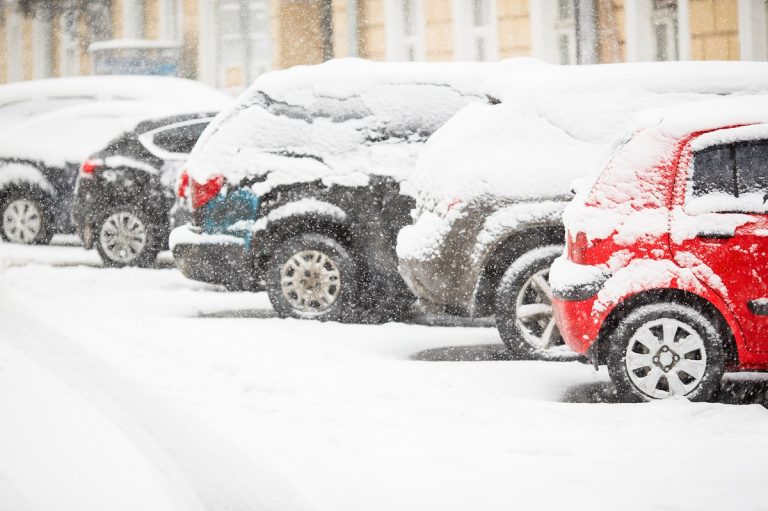- Ensure your heating system is efficient, and consider replacing older models with energy-efficient options.
- Identify and seal gaps or cracks in your home to prevent drafts and heat loss.
- Insulate your pipes and winterize sprinkler systems to prevent freezing and subsequent damage.
- Regularly maintain your gutters, install smoke and carbon monoxide detectors, and stay aware of poisoning symptoms.
- Take the time to winterize your property for a safe and cozy season indoors.
As the temperature drops, it’s time to prepare your property for winter. Winterizing your property can help you stay cozy and save money on heating bills.
As a homeowner, taking care of your property all year round is essential, but winter comes with its own set of challenges. This blog post will discuss the essential steps to winterize your property and ensure a comfortable, cozy indoor season.
Check Your Heating System

The first essential step in winterizing your property is to make sure your heating system is running efficiently. Heating systems should be serviced at least once a year to ensure everything is in working order.
Check Before Winter
You should check your heating system early in the season before the colder temperatures settle in. If you have a heating system that uses filters, you should replace or clean them regularly for better airflow.
Replace Older Models
In addition to ensuring your heating system is running efficiently, you should also take a few other precautions. You should consider replacing an older heating system with an energy-efficient model. This can help save you money on your energy bills and reduce the risk of expensive repairs in the future.
Seal Up Gaps and Cracks
Winter air can find its way into your home through the smallest gaps and cracks, causing drafts and energy loss. Pay attention to doors and windows, as these are common culprits for drafts. You should seal any gaps or cracks with caulk or weather stripping. You can also consider adding draft stoppers, which are long tubes of fabric filled with insulating material that can be placed at the bottom of doors to seal gaps.
Check the Ceiling and Walls
Gaps and cracks can also form in the ceiling or walls due to age, settling, or other wear and tear. You should inspect these areas for gaps or cracks and seal them as needed. This will help keep valuable heat inside your home instead of letting it escape through the walls.
Insulate Your Pipes
As temperatures drop, your pipes are at risk of freezing. Frozen pipes can burst and cause significant water damage to your home. To prevent pipes from freezing, insulating them with foam insulation is essential. You can find foam insulation at most home improvement stores. If you have outdoor pipes, you should also turn off the water and drain the pipes to prevent them from freezing.
Winterize the Sprinklers
If you have an in-ground sprinkler system, it’s important to winterize the system before temperatures drop below freezing. This means turning off the water and draining any remaining water from the pipes. You should work with a reputable company that can perform a reliable sprinkler blowout process. The process removes moisture from the sprinkler lines to reduce the risk of freeze damage when winter arrives.
Maintain Your Gutters
Gutters are essential for directing water away from your home, and they can become clogged with leaves and debris over the fall season. It’s important to clear out your gutters before the winter season starts. If your gutters become clogged, it can cause water damage to your home, and the weight of the debris can cause the gutters to sag or break. You should inspect your gutters at least twice a year to keep them clean and in good condition.
Gutter Guards
You can also install products like gutter guards to help prevent debris from getting into the gutters. Gutter guards come in various materials and styles, so choose one for your home and climate. Once you’ve installed the guards, inspect them regularly and clean them when necessary.
Check Your Smoke and Carbon Monoxide Detectors

During winter, homeowners often use heating systems that can produce carbon monoxide. Carbon monoxide is a colorless, odorless gas that can be fatal in high concentrations. You should ensure you have a working carbon monoxide detector on every floor of your home and a smoke detector.
Regular Testing
Test them regularly and replace the batteries at least twice a year. Having your furnace and chimney inspected once a year is also a good idea. That way, you can ensure that potential carbon monoxide issues are addressed quickly before they become dangerous.
Importance of Awareness
It’s important to be aware of the signs of carbon monoxide poisoning. Symptoms include dizziness, nausea, headaches, confusion, fatigue, and chest pain or tightness. If you or your family are experiencing these symptoms, evacuate the premises and call for medical help immediately.
Winterizing your property is essential for homeowners to ensure a cozy and safe indoor season. By following these essential steps, you can save money on heating bills, prevent damage to your property, and stay safe from carbon monoxide and smoke hazards. Take the time to winterize your property, and enjoy a cozy and comfortable winter season.






